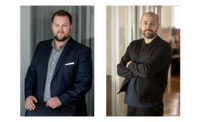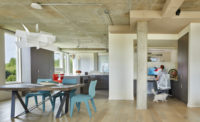Dan Spiegel recalls how 2019 Design Vanguard honoree Spiegel Aihara Workshop (SAW) was conducting an office retreat far from its San Francisco headquarters when, on March 17, the COVID-19 pandemic prompted Mayor London Breed to issue a shelter-in-place order for the Bay Area. “The offsite was an opportunity to relate to one another as people without screens,” Spiegel says, “Now we video conference multiple times a day—probably more than we interact with anyone else.”
Across the country, the design community has had to hustle its coronavirus-era transition to remote work. In Los Angeles, up-and-coming architect Dan Brunn says, “I needed to scramble to buy a laptop for one employee,” while New York’s Leroy Street Studio has used its office van to deliver monitors and supplies to employees around the city.
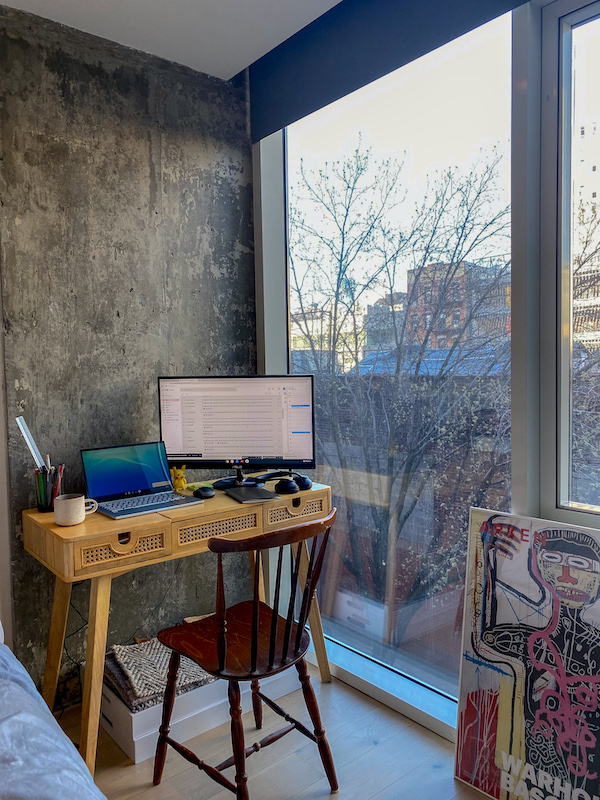
After establishing work-from-home setups, there are still barriers to normality. Anne Mooney, cofounder of Sparano + Mooney Architecture, which is based in Salt Lake City and Los Angeles, has faced maxed-out Internet connectivity, “with all our neighbors also working at home, along with the kids tackling online school.” Back in New York, Desai Chia Architecture’s Kathy Chia regrets the loss of spontaneously drawing, modeling, or rifling through the material library with her colleagues: “We can’t just pop over, see the progress, and chat about ideas as they come up.” As Oklahoma City–based architect and multiple AIA National Honor Award winner Rand Elliott eloquently puts it, “The biggest impact for our firm has been the fracturing of the office spirit. It is when we are together that we share, collaborate, and do our best work. There is energy in proximity.”
In spite of hiccups and hesitations, architects are settling into a work-from-home groove—even “thriving in a virtual environment,” says Philip Chen, president of Ann Beha Architects in Boston. In addition to the ubiquitous video-conferencing platform Zoom, architects interviewed for this story have largely turned to Microsoft Teams, GoToMeeting, and Slack as collaboration tools, and many are updating Revit models in the cloud and redlining drawings using Bluebeam. (Höweler + Yoon Architecture’s Eric Höweler humorously reports, “For us, everyone is on Remote Desktop. We have 22 workstations that seem to be working without operators—like the studio is possessed.”) Materials vendors have been shipping samples to specifiers’ homes via overnight delivery.
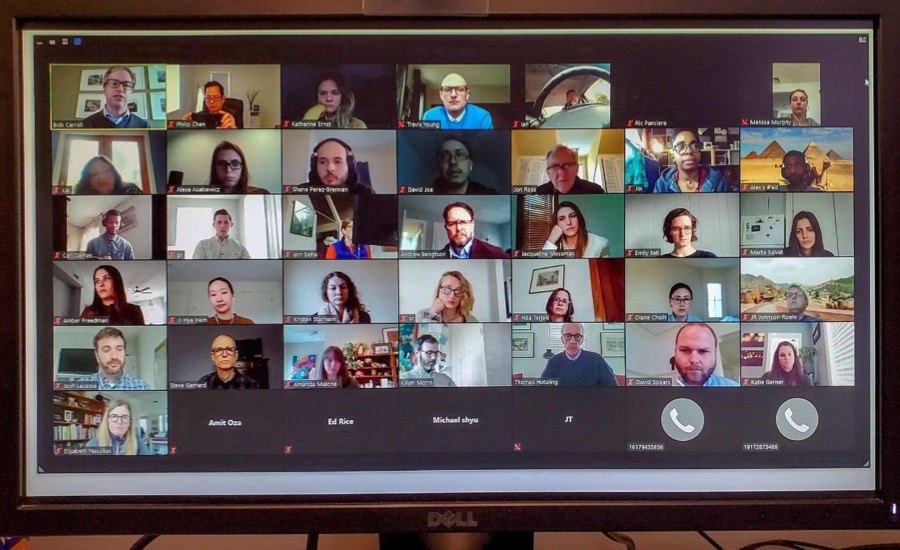
Virtual collaboration has allowed other aspects of design practice to forge ahead. “Several of our projects are publicly funded, requiring public votes to approve funds,” explains David Croteau, president of Boston-based Flansburgh Architects; one town is moving forward with its project thanks to a remote public meeting attended by 150 people through Zoom. Leroy Street Studio partner Shawn Watts says his firm has continued its community practice, by moving a current 8-week student workshop to video conferencing.
Architects admit that best practices for remote work are not self-evident. Another one of Croteau’s public clients has delayed its funding vote due to social distancing, for example, and Chen observes that stewarding office culture virtually requires a commitment to both communication and decorum.
Meanwhile, for construction efforts that are still active, Sommer Schauer of Architecture Plus Information (A+I) notes, “We’ve had to be inventive negotiating quick decisions that normally would be done with all parties in the field.” The principal of the New York–based studio recounted that a project team recently combined FaceTime and Google Hangouts to resolve site conflicts between a general contractor and client, with the project architect updating her CAD drawings in real time.
Yet overall, interviewees echo the finding of Christoff : Finio cofounder Martin Finio, “that we are actually more closely connected internally, with our consultants, and with our clients. It has been an endless stream of video conferencing on an endless array of online platforms.” With staff check-ins scheduled twice a day, the New York–based architect adds, “It has instilled a new discipline to our communication.”
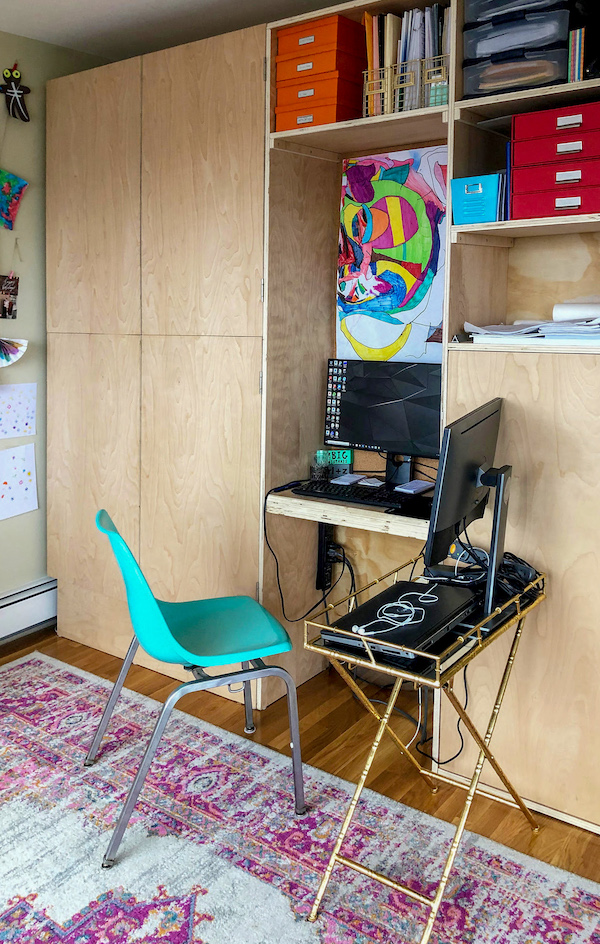
The going is so good, in fact, that architects are advocating for remote-work practices to become part of their post-coronavirus operations. “It will potentially allow us to responsibly enable remote working in a limited fashion after the pandemic,” says Colin Speer, associate principal of Form4 Architecture in San Francisco; expanding telecommuting is under consideration at multiple firms. In Brooklyn, BAAO principal Alexandra Barker says she would like Google Chat “to keep going even when we get back to the office, because it is a less disruptive way to ask questions of the group, and I can monitor what is on everyone's mind.” And Spiegel, now sheltering in place with his wife and SAW cofounder Megumi Aihara, observes, “Having to schedule [video-conference] interactions has even helped us to block out sustained sessions for collaboration and concentration on a project, task, or problem. We hope to carry this forward!”
Firsthand experiences of the COVID-19 pandemic may shape architects’ approach to design, as well. Amir Kripper, a Boston-based architect specializing in multifamily projects, muses that condominiums and apartments may require office-grade tech infrastructure and yacht-like residential interiors to accommodate future stay-at-home orders. New York– and East Hampton–based architect Michael Haverland says his off-grid-minded single-family clients are more committed to alternative energy and on-site food production than ever. In the realm of workspace design, “The work-from-home mandate has given us a lot of experience with the mobile work styles and tools we often recommend for our clients, and it has increased our design empathy accordingly,” says Peter Knutson, also a principal at A+I.
“We spend our careers preparing for future scenarios and anticipating change,” say 1100 Architect co-founders David Piscuskas and Juergen Riehm. “We are often expected to see around corners.”



